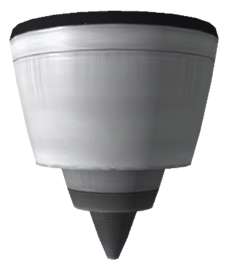Difference between revisions of "J-33 "Wheesley" Turbofan Engine"
Kerbolnaut (talk | contribs) |
m (sp) |
||
| Line 26: | Line 26: | ||
Created by: C. Jenkins | Created by: C. Jenkins | ||
| − | == | + | == Trivia == |
The designation “J-33 Wheesley” may be a reference to the real-life JT3D turbofan jet engine, also known as the TF33, made by U.S. aerospace company Pratt & Whitney which was involved with the Space Race. | The designation “J-33 Wheesley” may be a reference to the real-life JT3D turbofan jet engine, also known as the TF33, made by U.S. aerospace company Pratt & Whitney which was involved with the Space Race. | ||
Revision as of 06:04, 24 January 2016
| J-33 "Wheesley" Turbofan Engine | ||
| Jet engine by C7 Aerospace Division | ||
| Radial size | Small | |
| Cost | (total) | 1 400.00 |
| Mass | (total) | 1.500 t |
| Drag | 0.2 | |
| Max. Temp. | 2000 K | |
| Impact Tolerance | 7 m/s | |
| Research | | |
| Unlock cost | 4 000 | |
| Since version | 0.15 | |
| Part configuration | jetEngineBasic.cfg | |
| Maximum thrust | 120.00 kN | |
| Isp | (max) | 10500 s |
| Fuel consumption | 0.23 | |
| Intake air consumption | 29.60 | |
| Thrust vectoring | No | |
| Electricity generated | 4 ⚡/s | |
| Testing Environments | ||
| On the surface | Yes | |
| In the ocean | Yes | |
| On the launchpad | Yes | |
| In the atmosphere | Yes | |
| Sub-orbital | No | |
| In an orbit | No | |
| On an escape | No | |
| Docked | No | |
| Test by staging | Yes | |
| Manually testable | Yes | |
| Packed volume | None | |
The J-33 "Wheesely" Turbofan Engine is an air-breathing engine which uses liquid fuel and intake air. This engine is the second air-breathing engine which can be unlocked in the tech tree, after the J-20 "Juno".
Performance and usage
Unlike many of the other jet engines (and all of the rockets), this engine is capable of reversing its thrust. This makes it very useful for backing aircraft into hangars and for rapid deceleration during landing. The only other engine capable of this feat is the enormous J-90 "Goliath".
As with all jet engines, its thrust decreases significantly with altitude. Its maximum stationary thrust is rated at 80 kN at sea level. At about 4,000 m it generates just 47 kN, and at about 11,000 m it generates no more than 8 kN, ceasing to work entirely at about 15,600 m. Note that the behavior between these points (as shown in the part stats) is somewhat non-linear, especially above 4,000 m.
Thrust output also varies with speed, although far less then on the more advanced engines. Up to mach 0.6 it stays somewhat constant, slightly rising to a maximum of about 170% at mach 1.6 – 1.8, and then dropping to zero at mach 2.5.
The Isp stays constant over the full range of application, which is a big change compared to KSP in pre-1.0 versions. It is rated at 9,600 s, making it the nominal most fuel-efficient engine. However, as the thrust/height curve of this engine limits its usage to comparatively thick air which where drag remains a substantial impediment to high airspeed, this value is somewhat put into perspective.
Overall, it works best between 8,000 – 12,000 m altitude. Flying lower, the high air resistance requires more thrust which lowers the fuel efficiency, while in higher areas the engine's thrust output is simply too low for reasonable performance in flight.
Note that currently, the only planets which this engine will work on are Kerbin and Jool's moon Laythe.
Product description
| “ | A high bypass turbofan engine. This engine works best at low cruising speeds and altitudes. | ” |
Created by: C. Jenkins
Trivia
The designation “J-33 Wheesley” may be a reference to the real-life JT3D turbofan jet engine, also known as the TF33, made by U.S. aerospace company Pratt & Whitney which was involved with the Space Race.
Changes

- Remodeled, renamed, new description, and retextured
- Isp halved, thrust reduced
- complete overhaul of most characteristics
- Initial Release


